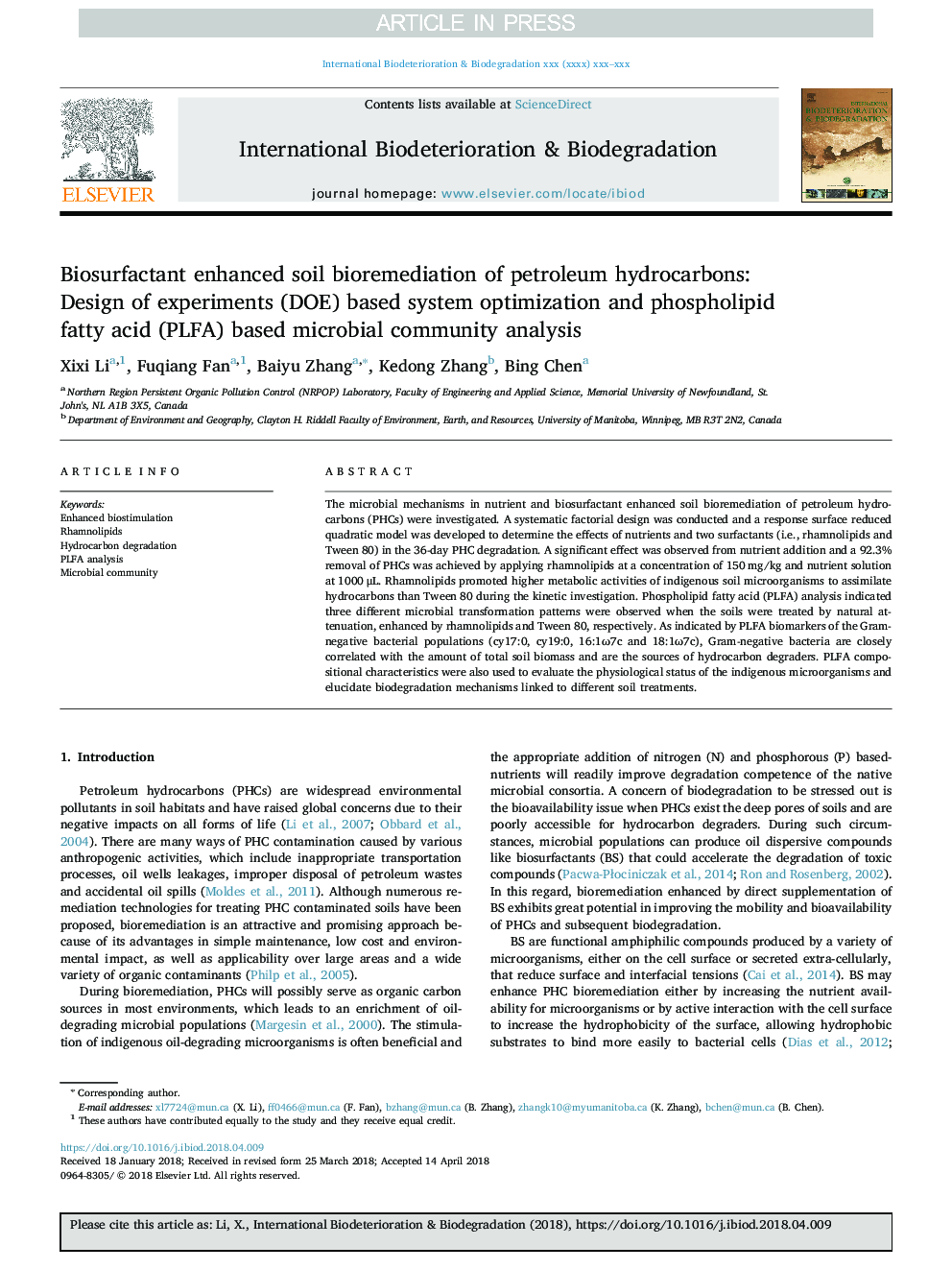| Article ID | Journal | Published Year | Pages | File Type |
|---|---|---|---|---|
| 8843768 | International Biodeterioration & Biodegradation | 2018 | 10 Pages |
Abstract
The microbial mechanisms in nutrient and biosurfactant enhanced soil bioremediation of petroleum hydrocarbons (PHCs) were investigated. A systematic factorial design was conducted and a response surface reduced quadratic model was developed to determine the effects of nutrients and two surfactants (i.e., rhamnolipids and Tween 80) in the 36-day PHC degradation. A significant effect was observed from nutrient addition and a 92.3% removal of PHCs was achieved by applying rhamnolipids at a concentration of 150â¯mg/kg and nutrient solution at 1000â¯Î¼L. Rhamnolipids promoted higher metabolic activities of indigenous soil microorganisms to assimilate hydrocarbons than Tween 80 during the kinetic investigation. Phospholipid fatty acid (PLFA) analysis indicated three different microbial transformation patterns were observed when the soils were treated by natural attenuation, enhanced by rhamnolipids and Tween 80, respectively. As indicated by PLFA biomarkers of the Gram-negative bacterial populations (cy17:0, cy19:0, 16:1Ï7c and 18:1Ï7c), Gram-negative bacteria are closely correlated with the amount of total soil biomass and are the sources of hydrocarbon degraders. PLFA compositional characteristics were also used to evaluate the physiological status of the indigenous microorganisms and elucidate biodegradation mechanisms linked to different soil treatments.
Related Topics
Life Sciences
Environmental Science
Environmental Science (General)
Authors
Xixi Li, Fuqiang Fan, Baiyu Zhang, Kedong Zhang, Bing Chen,
